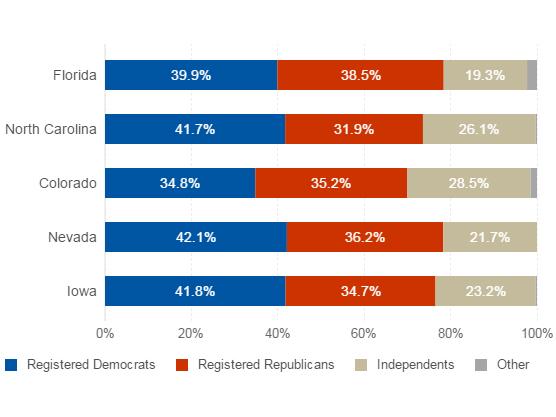The one chart that shows how millions of Americans have already voted
Early voting is allowed in 37 of North America's 50 states

Your support helps us to tell the story
From reproductive rights to climate change to Big Tech, The Independent is on the ground when the story is developing. Whether it's investigating the financials of Elon Musk's pro-Trump PAC or producing our latest documentary, 'The A Word', which shines a light on the American women fighting for reproductive rights, we know how important it is to parse out the facts from the messaging.
At such a critical moment in US history, we need reporters on the ground. Your donation allows us to keep sending journalists to speak to both sides of the story.
The Independent is trusted by Americans across the entire political spectrum. And unlike many other quality news outlets, we choose not to lock Americans out of our reporting and analysis with paywalls. We believe quality journalism should be available to everyone, paid for by those who can afford it.
Your support makes all the difference.As the polls opened on Election Day, more than 46 million Americans had already cast their ballots for US President, with some analysts declaring that a record early turnout may have already decided the outcome of the Presidential race in some states.
Early voting is allowed in 37 of North America's 50 states, including key swing states Florida, North Carolina, Colorado, Nevada and Iowa.
The number of early votes has surpassed the total from 2012 and they have also revealed a number of voting trends.
Florida, which has 29 electoral college votes, received around 6.5 million early ballots, which is more than three-fourths of the expected vote.
Democrats are ahead with 39.9 per cent to the Republicans 38.5 per cent.
While the African-American share of the vote is lower in comparison to 2008 and 2012, votes from Hispanics have almost doubled to more than 976,000. This rise in Hispanic voters is expected to be a trend that may be to Hillary Clinton's advantage.
More than two-thirds of the votes have been cast early in North Carolina with 15 electoral collage votes, where Democrats lead with 41.7 per cent to the Republican's 31.9 per cent.
Again, the black turnout has remained lower by nearly 65,000 voters.
Scott Tranter, co-founder of the Republican data firm Optimus, said the outcome may hinge on unaffiliated voters and ticket-splitters. "It's unclear whether Trump can consolidate 90 percent of the Republican Party," he said.
Colorado's early votes show a very narrow Republican lead at 35.2 per cent compared to the Democrat's 34.8 per cent. Republicans also held an advantage at this point in 2012.
Nevada, which has six electoral college votes, has a clear Democrat lead at 42.1 per cent to the Republican's 36.2 per cent. This is comparable to the last election where Obama won by 6 percentage points.
Jon Ralston, a political analyst in Nevada, told the Financial Times that this early vote result could mean the state is beyond Mr Trump's reach.
“The only reason I ever thought he had a chance here was because of the lack of enthusiasm for her [Clinton] and the plethora of uneducated voters here (aka, Trump’s base)”, Mr Ralston said. “But the early voting numbers are so daunting, and the Hispanic turnout was so large in Clark County, his path went from narrow to blocked.”
Again, the Latino and Asian-American turnout increased in the state this year, while black participation saw slightly lower numbers.
In Iowa, which has six electoral college votes, Democrats lead by 41.8 per cent to the Republican's 34.7 per cent. This represents a narrower gap compared to the early votes cast in 2012, with Democrats running below 2012 levels.
Additional reporting by Associated Press
Join our commenting forum
Join thought-provoking conversations, follow other Independent readers and see their replies
Comments